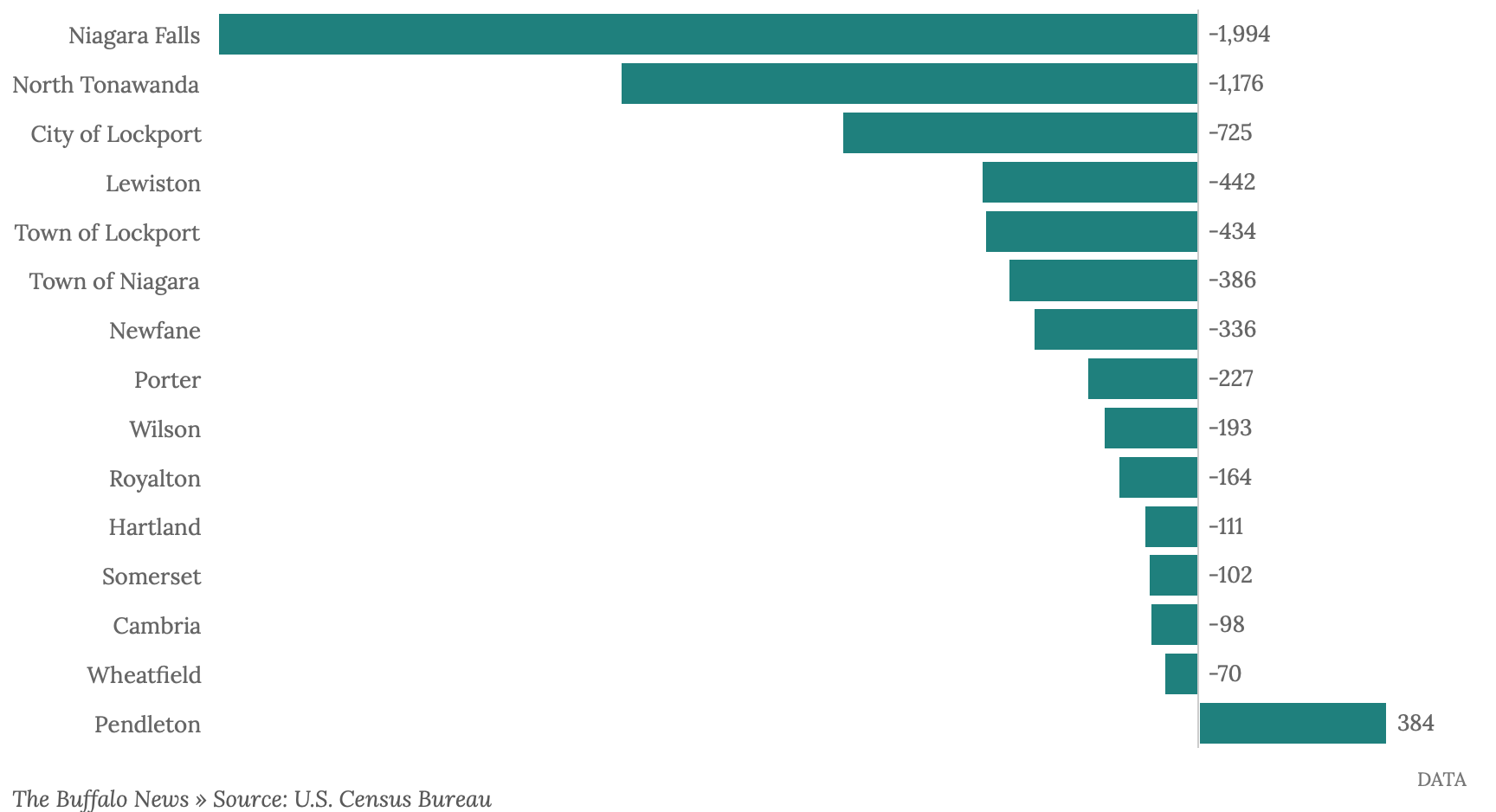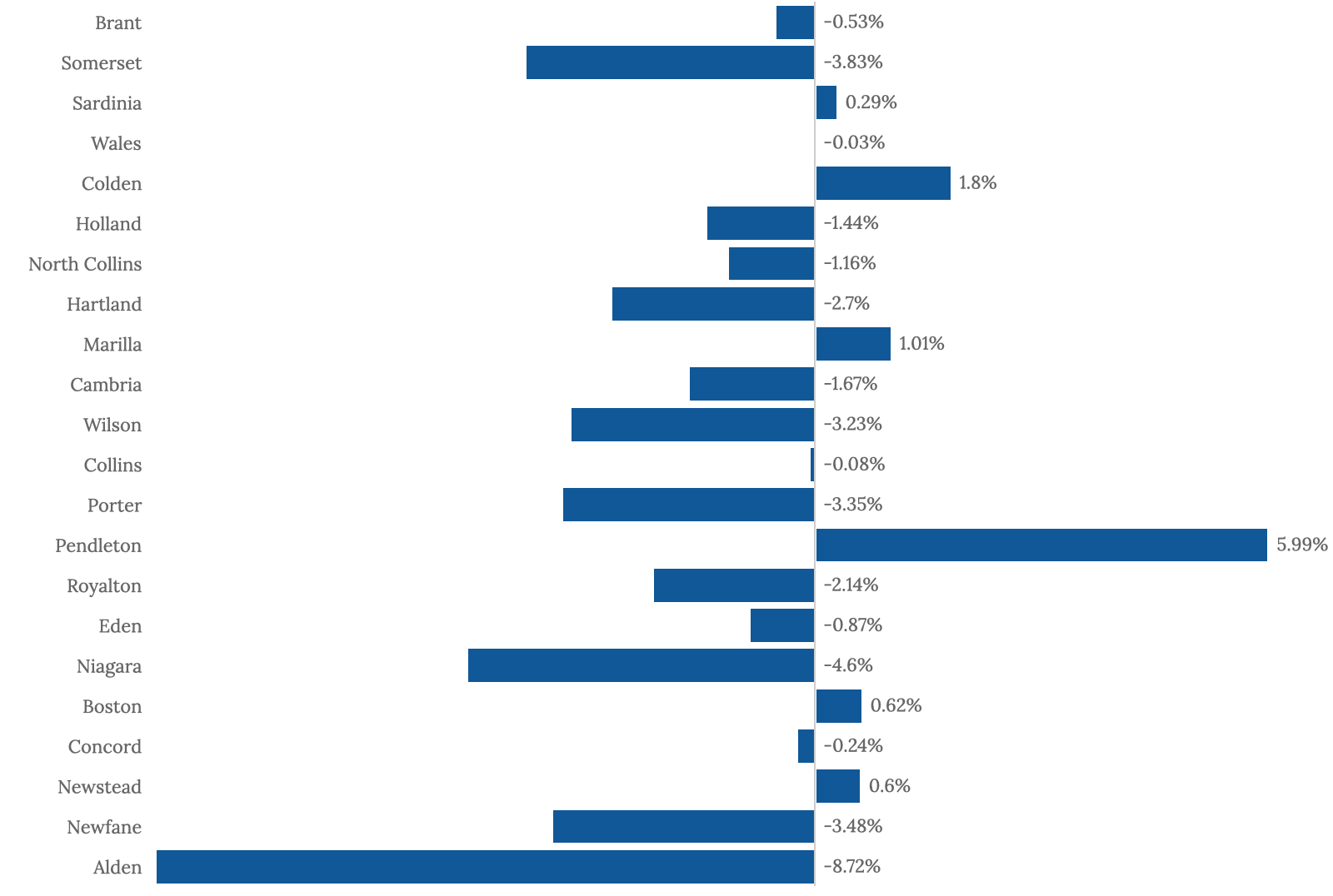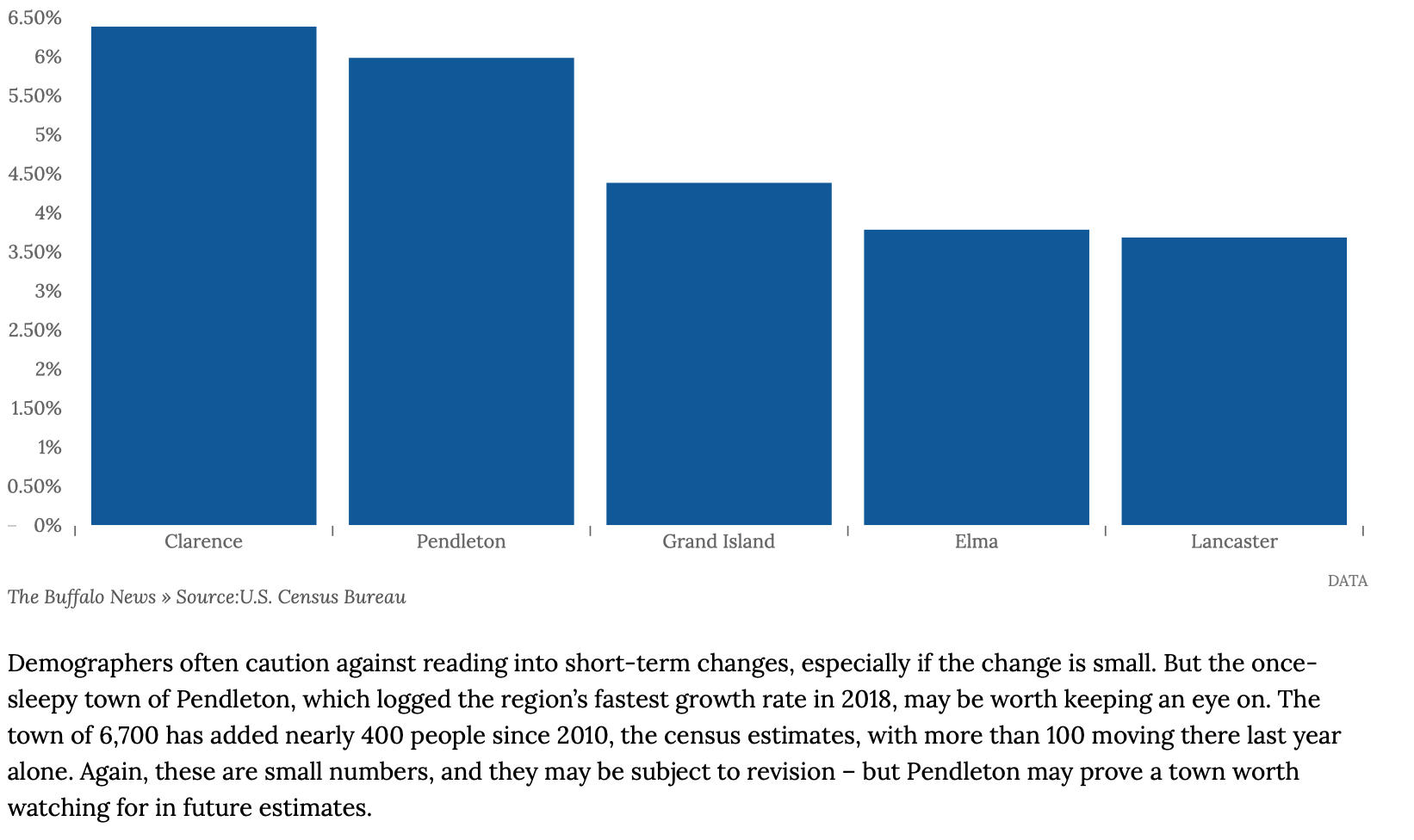Despite the mania around downtown living and Buffalo’s urban “revival,” the city continues to lose population to its suburbs, according to new estimates from the U.S. Census Bureau.
The 2018 population numbers, which cover cities and towns, show contractions in Western New York’s very largest and very smallest places even as momentum grows in places like Amherst and Clarence. Those findings mirror longtime trends in the region, where the development of Buffalo’s suburbs has far outpaced that of the city itself.
Notably, these figures aren’t the last word on city- and town-level population: The census retroactively adjusts its past estimates each year. (According to this release, for instance, the City of Buffalo had 2,300 fewer people in 2017 than the bureau previously calculated.) Local planners, politicians and curious locals won’t get a more definitive picture until after the 2020 census.
Until then, here are five big-picture takeaways from the latest estimates:

This isn’t exactly breaking news, but the City of Buffalo is shrinking – even with the much-publicized influx of immigrants and hurricane evacuees. Between 2010 and 2018, the Census Bureau estimates that Buffalo lost roughly 5,000 residents, or almost two percent of its total population. The picture is similar in Cheektowaga, Tonawanda and Lackawanna, which have all seen population drops in both the past year and over the eight years since the last decennial census.
But there are big exceptions to the decline of the inner suburbs. The Town of Amherst, in particular, has added more than 3,200 people since 2010, making it the region’s largest gainer in raw-number terms. West Seneca also grew by a more modest 588 people.

It’s no surprise that Niagara Falls, North Tonawanda and Lockport are getting smaller, given both last month’s county-level census estimates and long-term migration trends. All three cities have lost between 3 and 4% of their total population since 2010.
But the losses aren’t restricted to the county’s heavyweights, the new estimates suggest. They show that every incorporated town in Niagara County has lost population, with the exception of Pendleton, which has gained just under 400 people since 2010.

Roughly three-quarters of the region’s smallest towns – those whose population rank in the bottom 50 percent – have contracted slightly since 2010, losing around 2% of their population on average. This often doesn’t amount to many people: 98 in Cambria, 227 in Porter and 336 in Newfane, for instance. Still, it may reflect a regional trend that demographers and real estate agents have tied to both new-housing availability and taxes.

In addition to Amherst, a number of second-ring suburbs added notable numbers of new residents: almost 2,000 in Clarence, more than 1,600 in Hamburg and more than 1,500 in Lancaster. Clarence is also the region’s largest gainer on a percentage basis, adding more than 6% to its population since 2010. The town has built out a number of new sub-developments in recent years – and new housing units are, incidentally, a major component of the Census Bureau’s annual city-level estimates.

Published in The Buffalo News, June 1, 2019.





